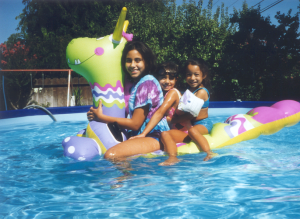The education component of the Au Pair program is a requirement of the State Department of the United States. The State department gives authorization for all Au Pair programs to exist. When an Au Pair does not achieve her requirement, this puts all Au Pair agencies at risk. Completing your education hours is an important part of being an Au Pair and is required by your contract with Au Pair In America. Taking a course will provide yet another level of experience during your year and yields many skills that you can use to further your personal goals. You may also make new friends and professional contacts! I hope you enjoy your educational courses. If you need assistance finding a course or have questions, please call or email your counselor.
Some Important Tips:
Any course can be taken as long as it is taught from a college, university or technical college. Only those schools approved by the State department can be accepted. All of the schools listed on your resource page on the Au Pair web-site are accepted http://www.aupairinamerica.com/state/georgia.asp
- Your counselor can clarify any questions about a school.
- Volunteer hours do not count towards your educational credits
- Weekend courses do count, if only one half of the requirement is met through weekend sources. Some places offering weekend courses are not accredited. Ask your counselor before signing up.
- The only online course currently being accepted by the State department is the UCLA Au pair advantage online course. NO other on line course can be accepted.
- 72-80 hours of education is required for standard Au Pairs.
- 144-160 hours for Educare Au Pairs.
- For a second year Au Pair, 36-40 hours is required for a six month extension and 72-80 hours for a nine or twelve month extension.
- Credits, hours and CEUs are different. Count the hours you are in a classroom this must be 72 hours.
- At the end of your course, send your community counselor your documents showing the name of the school and the hours that you have achieved. Check your certificate. Some certificates do not show the number of hours. If the hours are not present on the certificate, you will need a letter from the school stating how many hours you have achieved. This information is needed by your counselor to insure your certificate is giving to you and to prevent issues with your flight home.
- All education must be achieved one month prior to the end of your Au Pair term. Send all certificates or proof of your classes to your community counselor.
- Host families reimburse tuition costs and costs of related materials (books and supplies) up to $500 for the first year. EduCare companions are reimbursed up to $1000 for the first year. If it will cost you more than $500 (or $1000 for EduCare) to meet the requirement, you must pay the additional expense, so plan carefully.
- Your host family is required to provide transportation, including gasoline, parking, or public transportation costs (if applicable) to and from classes in your community. The cost of transportation is in addition to the $500/$1000 allocated to tuition and related fees. It is your host family’s responsibility to provide transportation or cover the transportation costs until you complete your educational requirement, even if the $500 education allowance has already been spent.
- To extend your first Au Pair term, you will need to have proof of 72 hours. Send the documentation to your community counselor as soon as possible. You should plan to have your education requirement finished at the time you request an extension. This happens approximately three months before the end of your first term. Au pair In America requires 72 hours to be able to extend your Au Pair term. Without 72 hours completed one month prior to the end of your term, Au Pair In America will not accept your application to extend and you must go home at the end of your first year.
If you want to extend and have not completed all of the hours, but you do intend to have them finished before one month prior to the end of your first term, you will need to do the following:
1. Register for a class that will complete 72 hours of education one month before the end of your first term.
2. Send the registration confirmation or other documents showing proof of your registration to your community counselor as soon as possible. All proof of education must be given to your counselor before your deadline to extend.
3. At the time that you finish the course, another letter will need to be written by the school stating that you have now completed the course and the number of hours you have earned. This must be completed one month prior to the end of your first year.
Your counselor is the best person to ask questions about your education requirement. Courses and colleges are constantly changing. Your counselor is always researching new and exciting courses that are appropriate for you. If you are aware of a new resource, please let your counselor know!
For more information about your education requirement visit http://www.aupairinamerica.com/resources/life_in_the_us/education.asp#1




